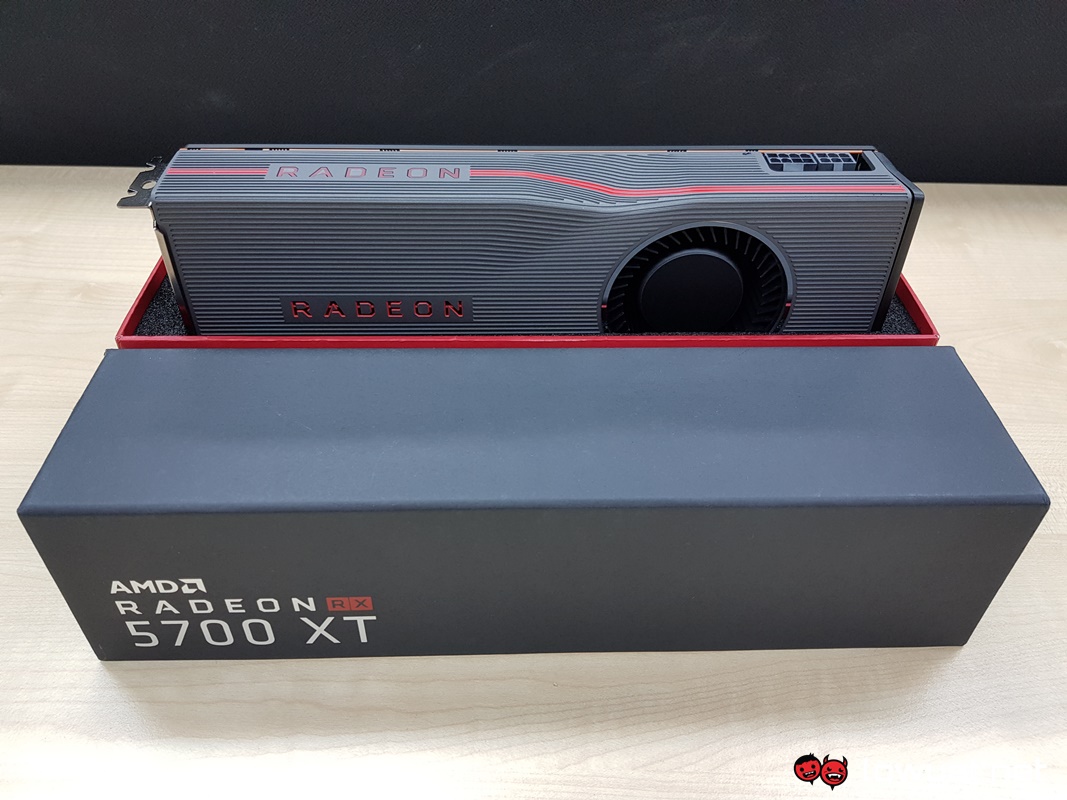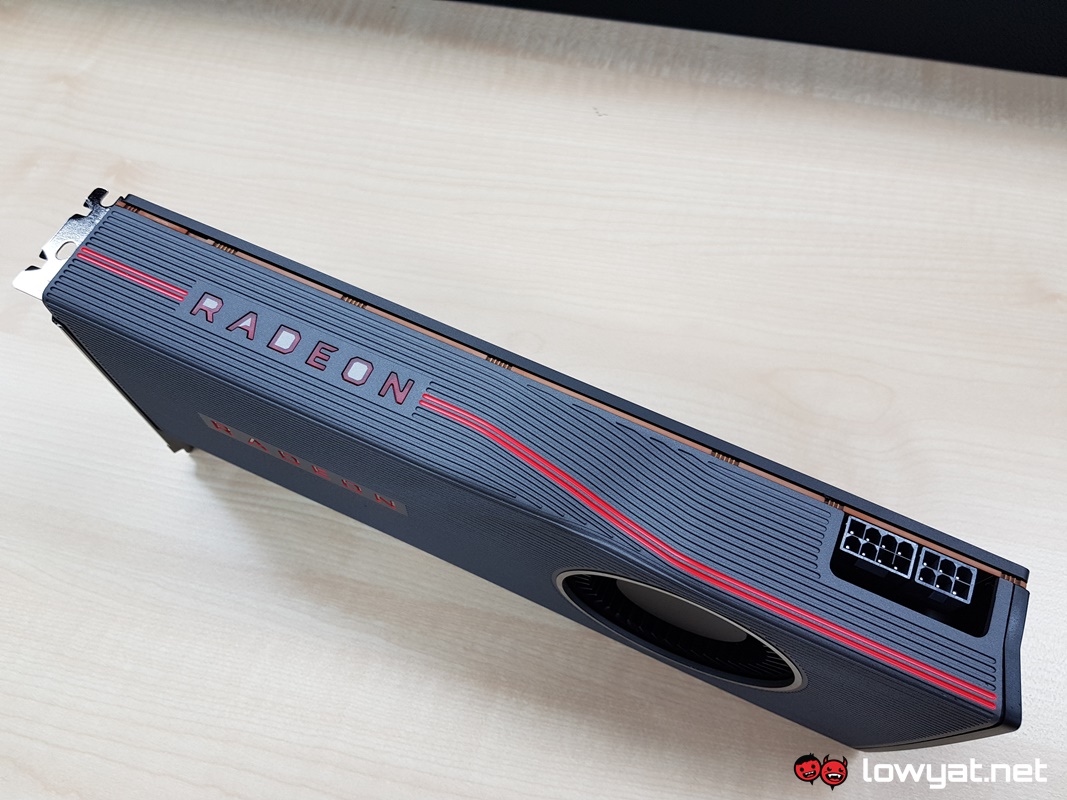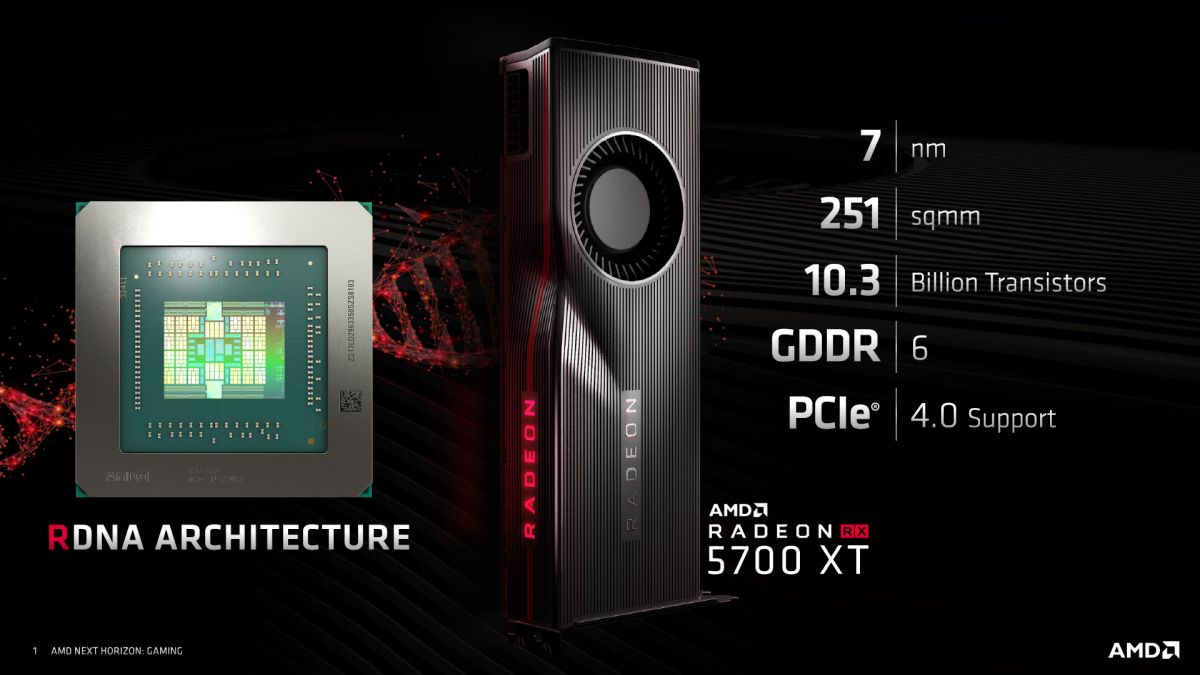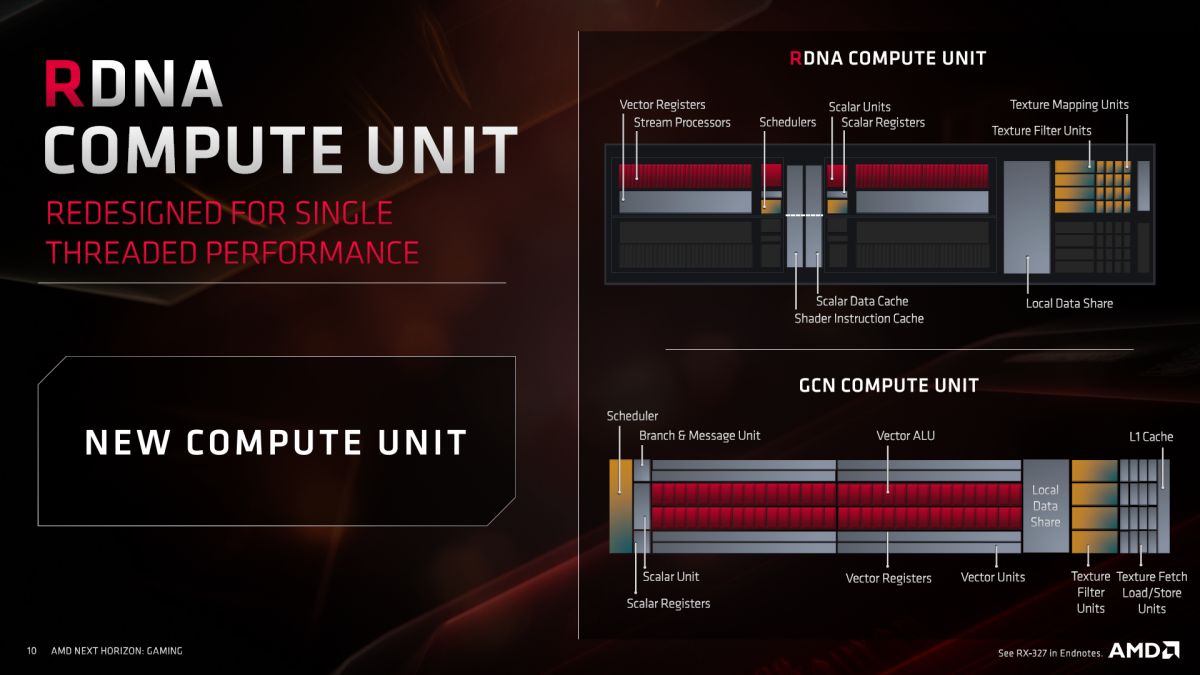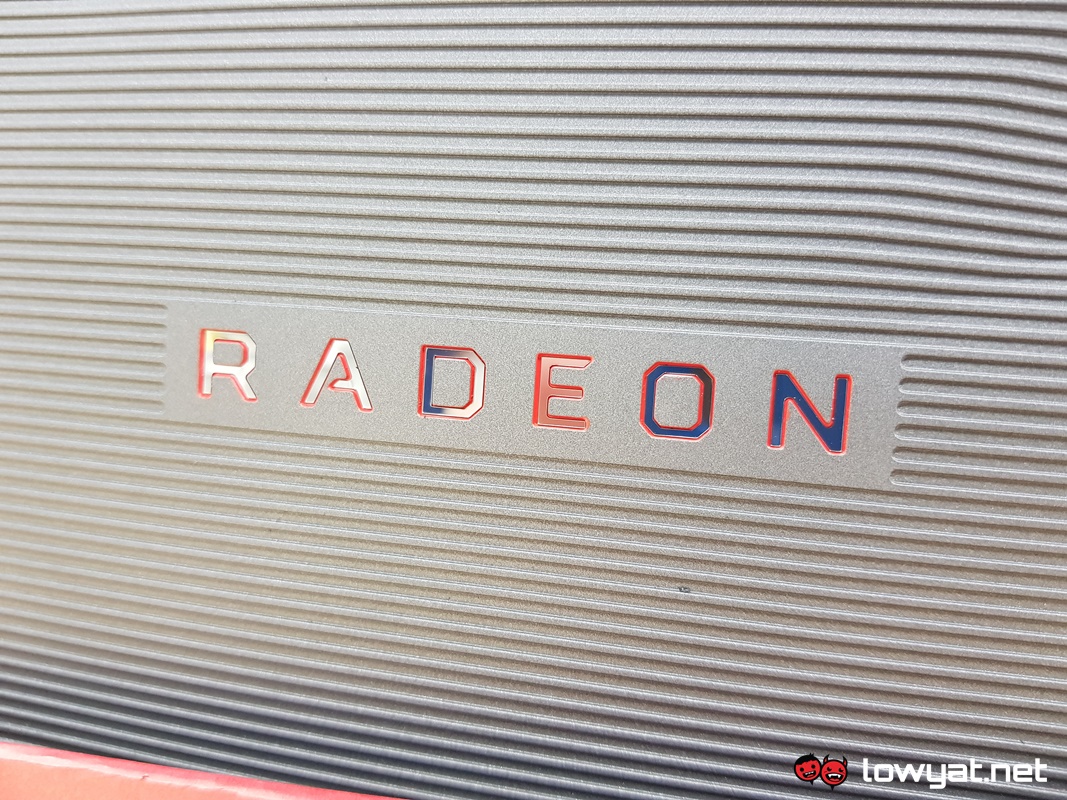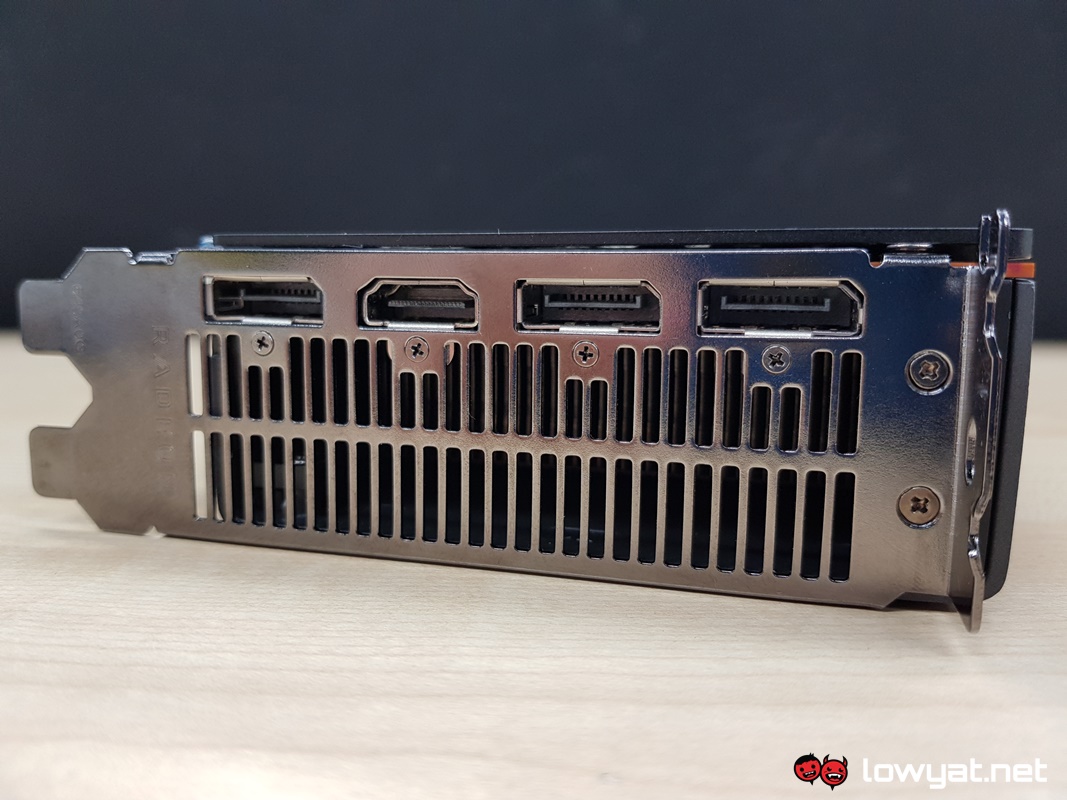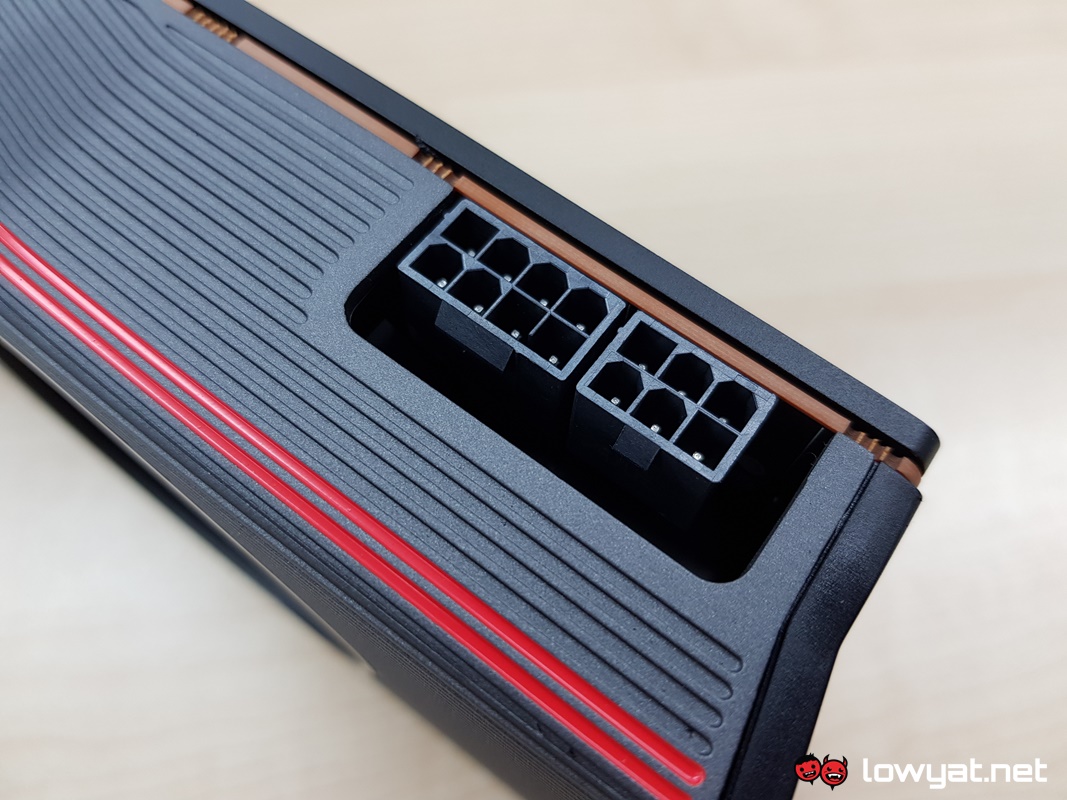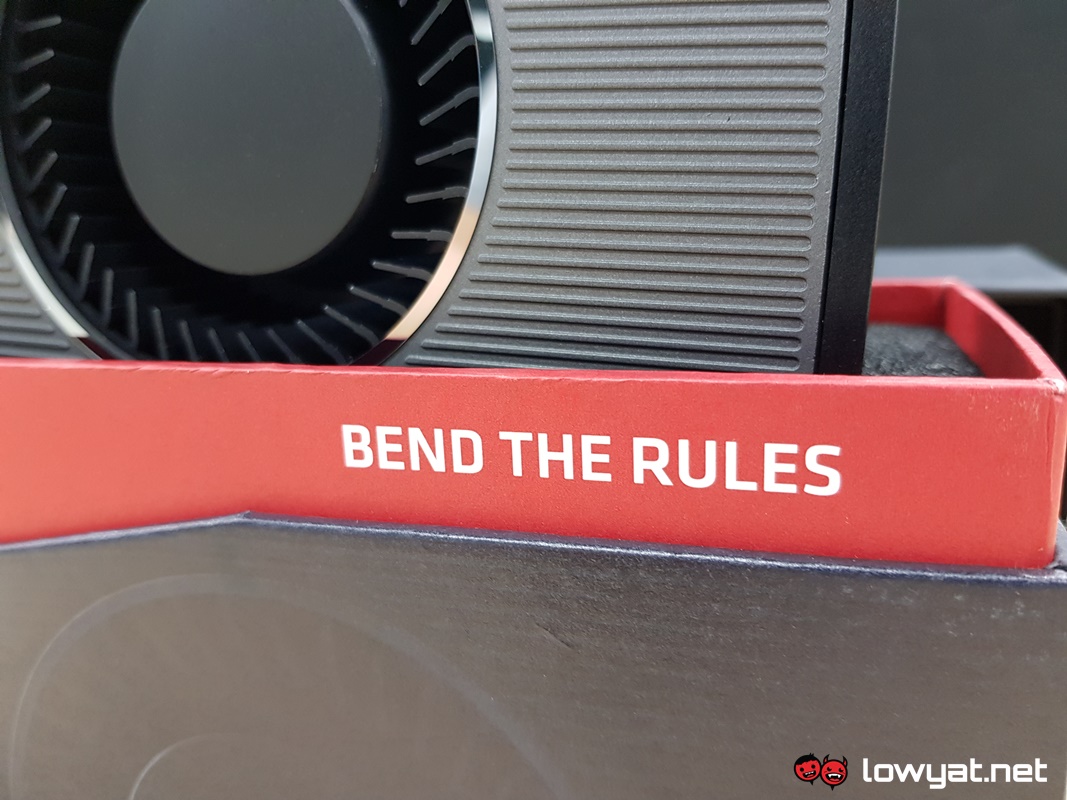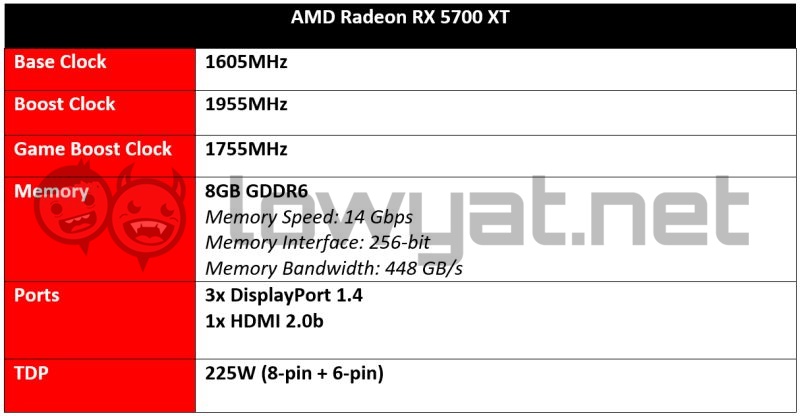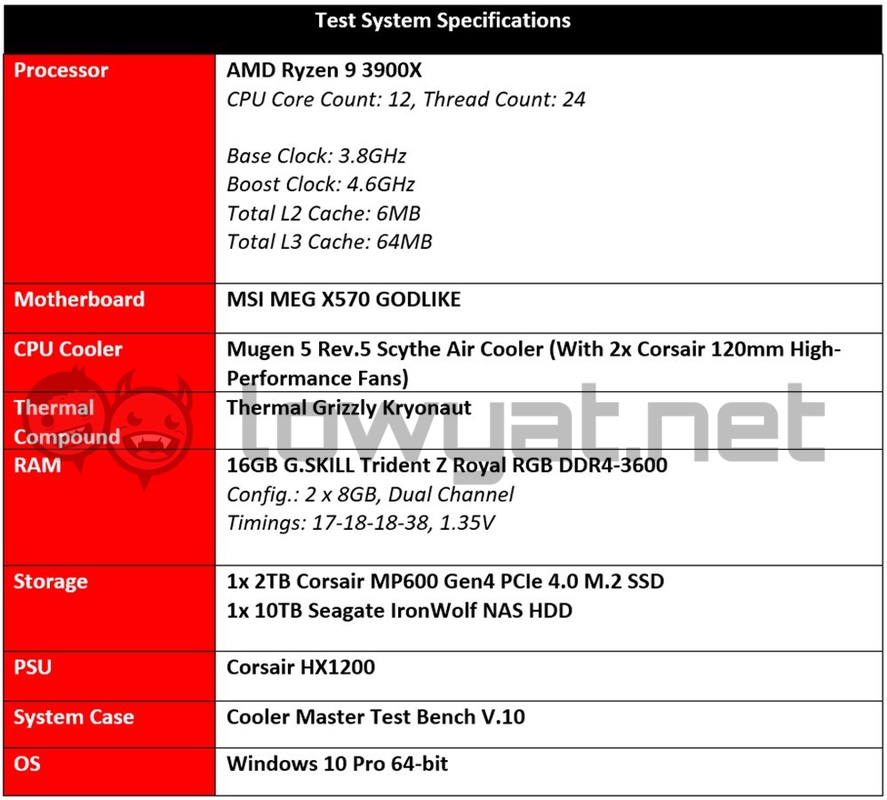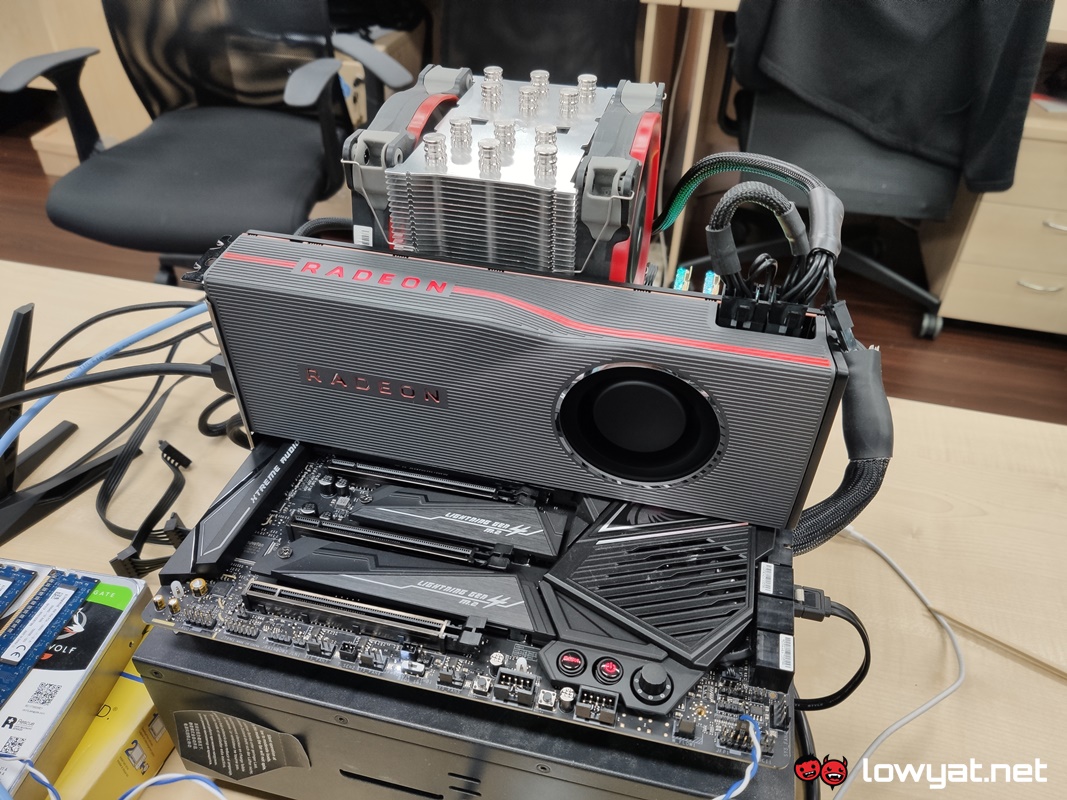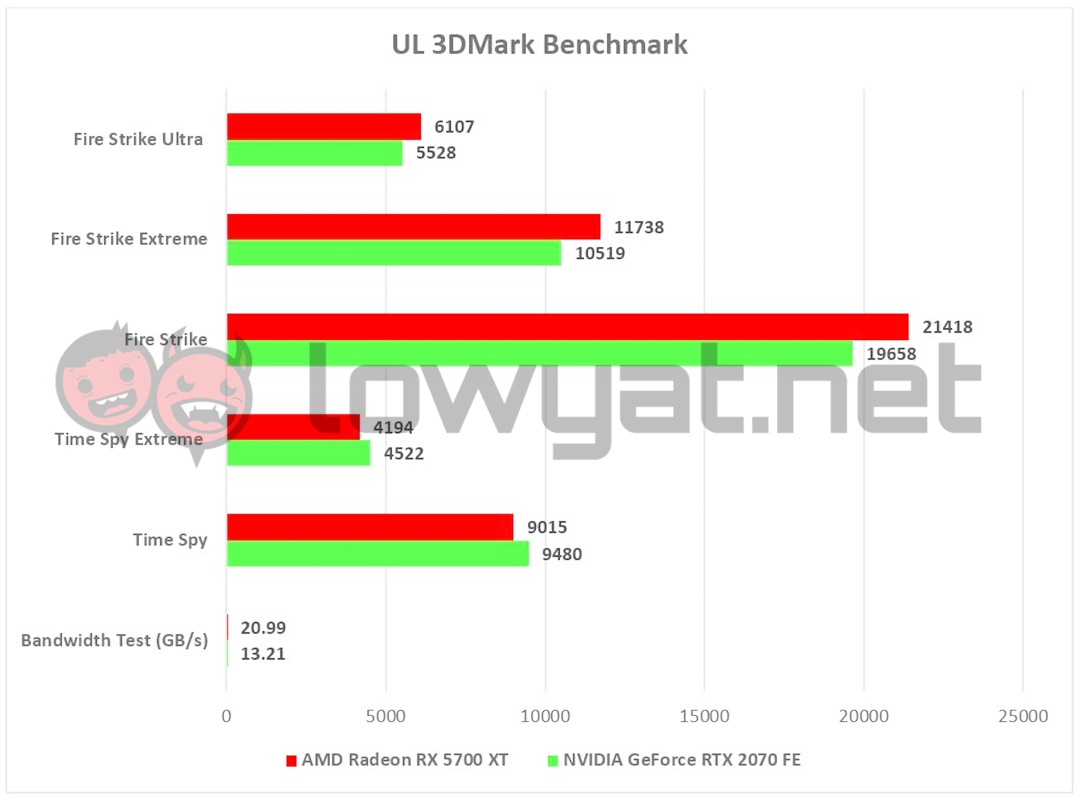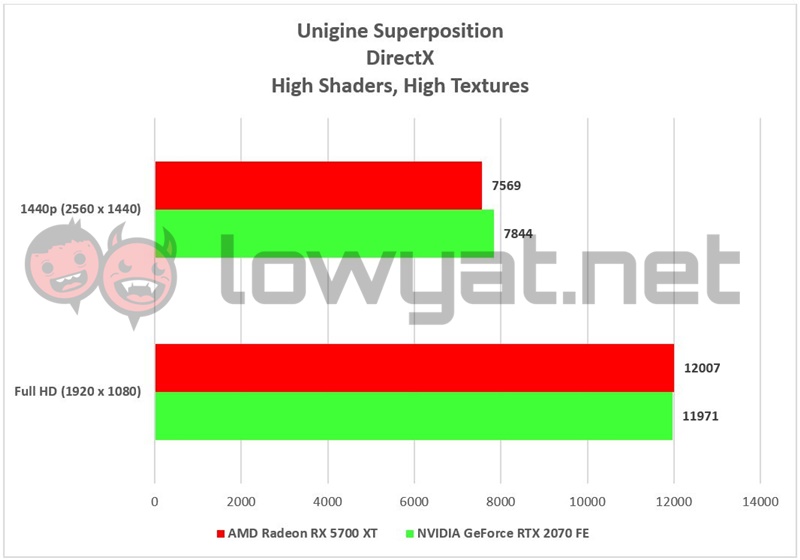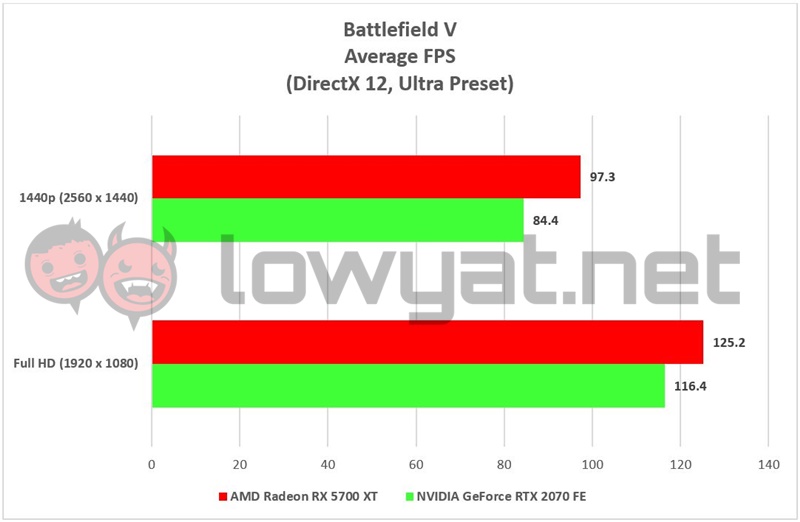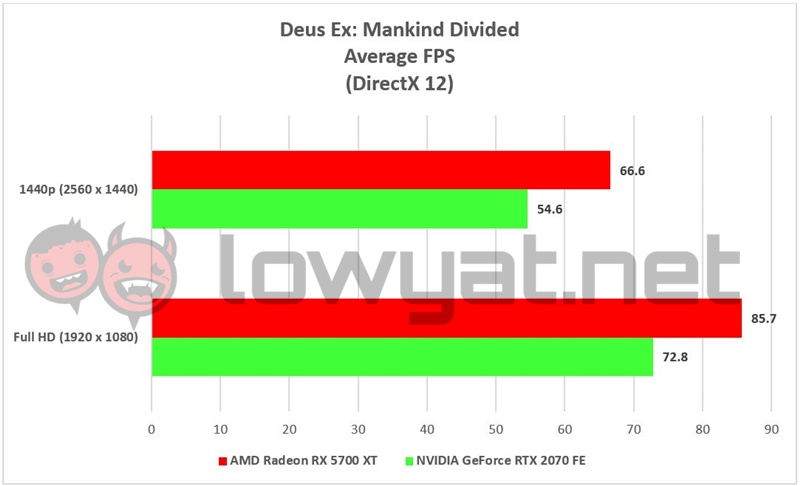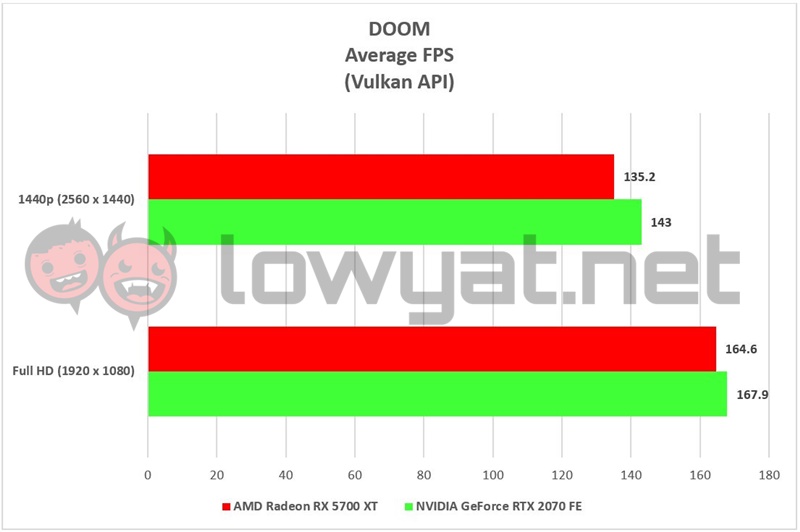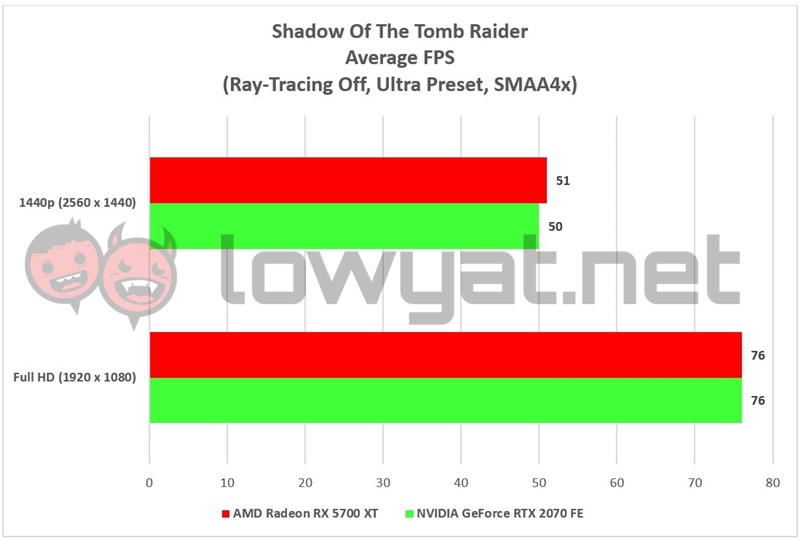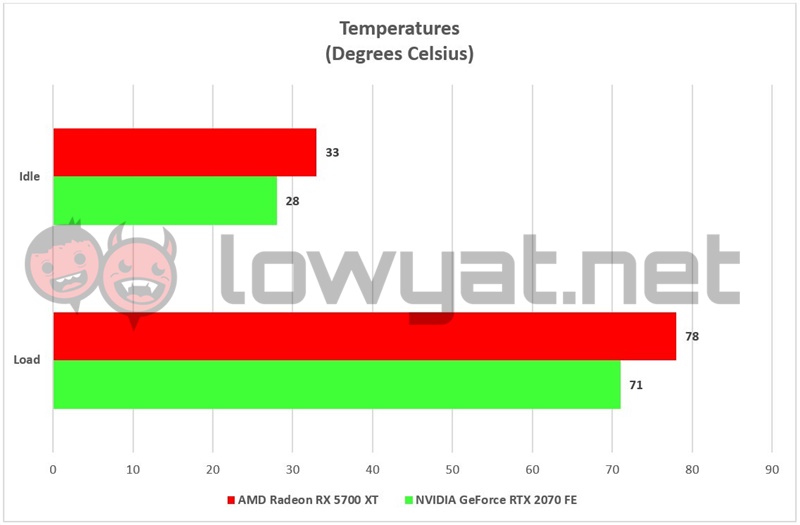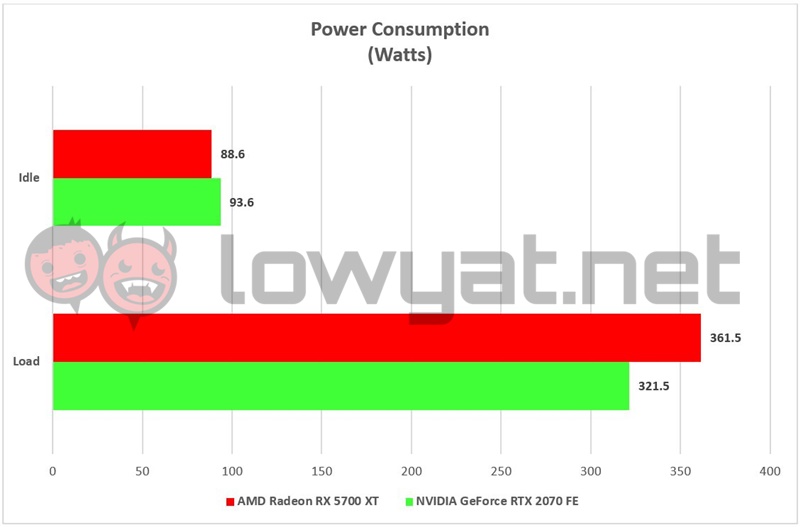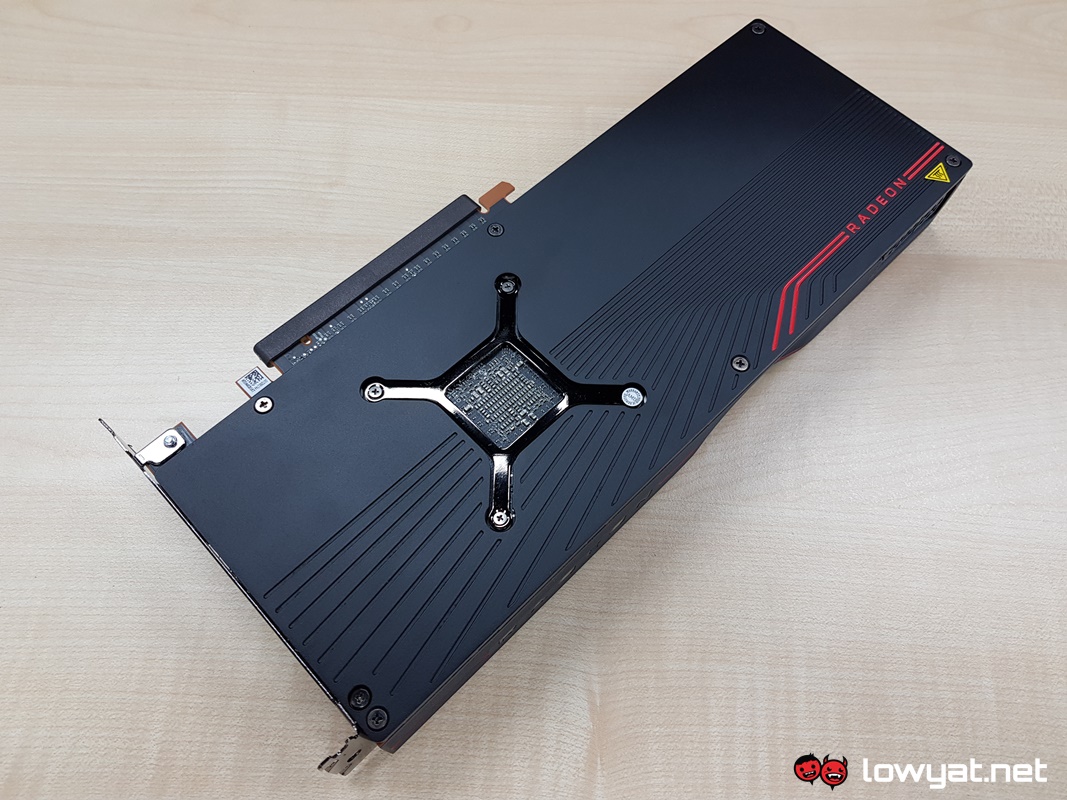This year was no different; the Radeon VII notwithstanding, the CPU and GPU maker lifted the veil off Navi, it’s new GPU architecture and direct successor to the Vega GPU architecture. From Navi, AMD also launched its Radeon RX 5700 XT and RX 5700. As a card with a new GPU architecture and PCIe interface, the card ended up in our hands, so naturally, we decided to put the card through its paces.
Design
To kick things off, I’ll start by answering both the general and obvious question about the card: What is the Radeon RX 5700 XT? As I mentioned at the start, the card is one of two entries, designed by AMD for the mid-range market.
Goodbye GCN, hello RDNA GPU Architecture.
At the very core is the 5700 XT’s beating heart, the new Navi GPU. Navi is a first of many for AMD; it is currently the only consumer-level GPU to be based on AMD’s new 7nm die lithography. And holds the titles of being the one of two graphics card to sport the new PCIe 4.0 interface on the current market.
The 5700 XT also marks AMD’s transition out its HBM2 memory, and into the embrace of the new GDDR6 memory standard. It’s a move that many consumers have been waiting for; compared to HBM2, GDDR6 has much higher data rates per pin. On that note, the card comes with 8GB of GDDR6 memory, with a memory bandwidth of 446GB/s. Gone is AMD’s GCN (Graphics Core Next) architecture, and in its place is the new Radeon DNA GPU architecture or RDNA for short. Suffice to say, it actually seems impressive. Technically speaking, the Navi GPU in the 5700 XT houses 40 RDNA Compute Units, which subsists of 80 Scalar processors, 2560 Stream Processors, 64 ROPs, and 160 Texture Units. Oh, and it’s got a 4MB L2 multi-level cache too.
Adding to the list is a Geometry Engine, 64 Pixel Units, and four Asynchronous Compute Engines. All designed to push out more performance while still being as power-efficient as possible.
Still no sign of dedicated ray-tracing hardware.
Of course, the one feature that the 5700 XT does not have are cores dedicated to the act of real-time ray-tracing. It’s a sticking point that I have often described as a missed opportunity for AMD, but to be fair, it is a debatable point.
Adoption of the graphical feature has been progressing at a snail’s pace, and the GPU maker’s focus has been on other things of late, and AMD’s focus has been more affixed on simply giving its direct rival, the NVIDIA GeForce RTX 2070, a run for its money. That isn’t to say AMD isn’t interested in creating hardware-driven ray-tracing graphics card. The company definitely has plans for such Radeon graphics cards in the pipeline; it’s just not planning on releasing it anytime soon.
PCIe 4.0 is currently a double-edged sword.
If I may, I would like to take a step back to AMD’s implementation of the new PCIe 4.0 on the 5700 XT. There’s no doubt that this is the next step in the evolution of next-generation motherboards and GPUs, but as it is with all “early adopter” technology, the only way you’ll be able to draw out the card’s full potential is through the use of AMD’s latest X570 motherboards.
On that note, I’m not saying that the card isn’t backwards compatible; you can still plug this card on to a motherboard running on PCIe 3.0, but obviously, the bandwidth will be halved. In terms of connectivity, the 5700 XT sports three DisplayPort 1.4 ports, and one HDMI 2.0b port capable of outputting 4K resolution. Power to the card is settled via one 8-pin and one 6-pin PCIe connector.
The reference cooler solution of the 5700 XT is also worth noting. Like the Radeon graphics cards of yore, the cooler shroud and backplate is made of a stylised aluminium alloy. Underneath the shroud, the card’s Navi GPU is cooled by a single blower-style fan and vapour chamber cooling solution. On another note, AMD’s engineers spent some time fine-tuning the blades of the fan to reduce the acoustics, but that’s a point I’ll address a little later in this review.
Test Machine Specs
In order to benchmark the card in earnest, AMD – as it has done for the last couple of years – provided us with a full test kit. More to the point, the components included one of the recently launched X570 motherboards that, in this case, happens to be MSI’s MEG X570 GODLIKE. Moving on, the test kit also contains a pair of 16GB (2x 8GB) G.SKILL Trident Z Royal RGB at 3600MHz, and an MP600 Gen4 NVMe M.2 SSD courtesy of Corsair. Because AMD is technically marketing the 5700 XT for the 1440p crowd, I ran the card using an ASUS ROG Swift PG27V. I know, it’s not a FreeSync gaming monitor, but to be fair, this is the only high-resolution gaming-grade peripheral I have at my disposal.
For the record, I ran benchmarks on the card as is. That means running the 5700 XT at its default boost clockspeed, which ramps up to 1755MHz. AMD’s official page does point out that the card can achieve boost clock speeds of up to 1905MHz by default, but again, I just left it as is. There’s also a valid reason for not overclocking; at the time writing, one of AMD’s representative told us to hold off on overclocking the card, due to some issues in the Radeon software. On that note, I will update the review with the card’s performance vis-a-vis overclocking at a later date. Oh, and just to keep things fair and on a level playing field, I retested the GeForce RTX 2070 Founders Edition on the same X570 motherboard.
Benchmarks
On the synthetic benchmarks, the 5700 XT holds out surprisingly well against the RTX 2070. In UL’s 3DMark tests, the card was clearly playing catch up with team green’s mid-range RTX offering in the Time Spy tests. But outpaces it in all three Fire Strike tests. In the Unigine Superposition benchmark, the 5700 XT also has no issues matching the RTX 2070 FE in Full HD. And while it seems to lag behind in the 1440p resolution, the scores between the two cards are technically really close.
The biggest surprise of the 5700 XT, however, laid with the gaming segment of the card. In Battlefield V (BFV) and Deus Ex: Mankind Divided (DXMD), the 5700 XT practically dominated the RTX 2070 FE. Outperforming it by an average of 10 frames or more in both 1440p and Full HD resolutions. Its performance in BFV is by far the most fascinating, and for good reason. For all intent and purposes, BFV is a title that is unabashedly tailored for NVIDIA’s GeForce RTX series graphics cards. What with DXR and DLSS options being included in the game. Then again, even with all those features turned off, BFV is still just as taxing on all the GPUs.
Despite its Dawn Engine already getting a little long in the tooth in terms of years, DXMD is still one of those graphics-intensive titles that I use to see how well a card carries itself. Once again, the 5700 XT just pulls ahead of the RTX 2070 FE with the in-game benchmark. That said, the game was initially made to run more optimally with Radeon-based GPUs, so once again, these number shouldn’t come as a surprise.
Of the four titles I use in my tests, DOOM was the oddball this time around. Sure, the 5700 XT had no trouble maintaining framerates above the 100 fps mark, but so does every other card since 2017. With the 5700 XT, there were random moments where the GPU seemed to produce this weird stutter, which in turn causes the framerates to drop by approximately 20 to 30 fps. Mercifully, those moments were brief and last only a fraction of a second. It is possible that the issue stems from the drivers provided by AMD; press drivers tend to be slightly buggy, if not wonky. On that note, I’m certain AMD would have addressed that issue with the later and official Radeon Adrenalin Software drivers.
Temperature And Power Consumption
Traditionally, Radeon GPUs generally run hotter and louder than its GeForce counterparts over at NVIDIA, and even consumes more power. With the 5700 XT, it’s a mixed bag. In regards to overall temperature, the Navi GPU actually ran much cooler than I anticipated, sitting only a few degrees higher than the RTX 2070. Yes, it can be argued that 78 degrees Celsius is still pretty hot, but considering the kind of numbers AMD’s past cards (we’re looking at you, Radeon VII) were running, these new numbers are a definitely a vast improvement over its predecessors. Mind you, these numbers were achieved with a reference cooler, meaning that third-party cooling solutions from AMD’s AiB partners may actually provide better thermals upon availability.
On the subject its power consumption, there’s really nothing to say. During testing, the 5700 XT pulled a little more than 350W while running under load; that’s considerably more than what the RTX 2070 was using. While idle, it pulled anywhere between 82W and 93W.
Conclusion
As the title of this review states, the AMD Radeon RX 5700 XT is clearly a move in the right direction for the GPU and CPU maker. The introduction of the Navi architecture is definitely a marked improvement over Vega, but the absence of any ray-tracing hardware still feels like a missed opportunity. Depending on who you speak to on the matter. Ray-tracing fidelity aside, it’s not an exaggeration to say that the card is definitely an alternative to the GeForce RTX 2070 when it comes to no-nonsense, pure performance. Plus, at an SRP of RM1859 and with the latest PCIe 4.0 interface, it’s not only more affordable than the competition, but also gives you bragging rights. At least, until both NVIDIA and Intel catch up to the new standard.
